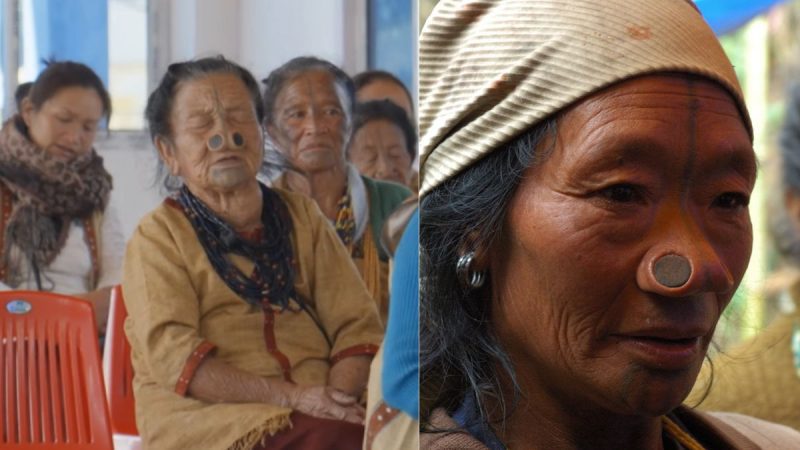The Apatani people of Arunachal Pradesh have just celebrated the opening of a new temple in the heart of Ziro Valley. It was not just a religious event but a deeply spiritual convergence that brought together tradition, community, and identity. Sarah Todd (@sarahtodd), an Australian chef and travel enthusiast, shared her wonderful experience of attending the event on Instagram. In her vlog, she said that she was privileged to see the rituals and resilience of the Apatani people, whose connection to the land and cosmos is both poetic and practical.
Why Apatani Women Wear Nose Plugs
The Apatani are a native tribal people who live mostly in the Ziro Valley of Arunachal Pradesh, located in the Eastern Himalayas of Northeast India. The Apatani community follows Donyi-Polo—the worship of the sun (Donyi) and moon (Polo), representing balance and duality of life. Their spiritual practice is to live in accordance with nature, not as a resource but as a spiritual companion.
One of the most distinctive cultural symbols of Arunachal Pradesh’s Apatani tribe is the rare nose plugs traditionally worn by the women. These wooden plugs were historically believed to guard women from being abducted by adjacent tribes, who were lured by their beauty.
Though the practice is declining among the younger generations, it is still a strong symbol of cultural identity and resistance for the tribe. The nose plugs, or Yaping Hullo, are accompanied by tattooed facial markings—a reflection of the tribe’s long-standing traditions and pride in their heritage.
These physical signs are not just cosmetics; they are the symbol of courage, survival, and self-defence passed from generation to generation.
Also Read: From Festivities To Sacred Rituals, Here’s What A Traditional Wedding Of India’s Gond Tribe Involves
A Culture Rooted In Balance And Respect For Nature
The Apatani Tribe of Arunachal Pradesh are also famous for their environment-friendly wet rice farming and organic cultivation activities. Their system of farming is machine and animal-free and is amongst the world’s most sustainable forms of farming.
The temple inauguration, attended by elders, children, and curious visitors like Sarah Todd, was more than just a celebration. It was a reassertion of cultural memory, a communal act of love, and a realignment at the spiritual level with the forces that shape their mundane lives—the Sun and Moon.
Sarah’s heartfelt words remind us that such experiences bridge worlds and deepen our understanding of India’s vast cultural landscape.
The Apatani tribe of Arunachal Pradesh shows us that modernity and tradition can walk hand in hand when respect, harmony, and balance lead the way.
Also Read: The Roots Of India’s New President Droupadi Murmu Bring This Indian Tribe Into Limelight
Which other Indian communities carry such hidden traditions? Perhaps the next story waits where we least expect it…
Cover Image Courtesy: @sarahtodd/Instagram & Wikimedia Commons
For more such snackable content, interesting discoveries and the latest updates on food, travel and experiences in your city, download the Curly Tales App. Download HERE.

